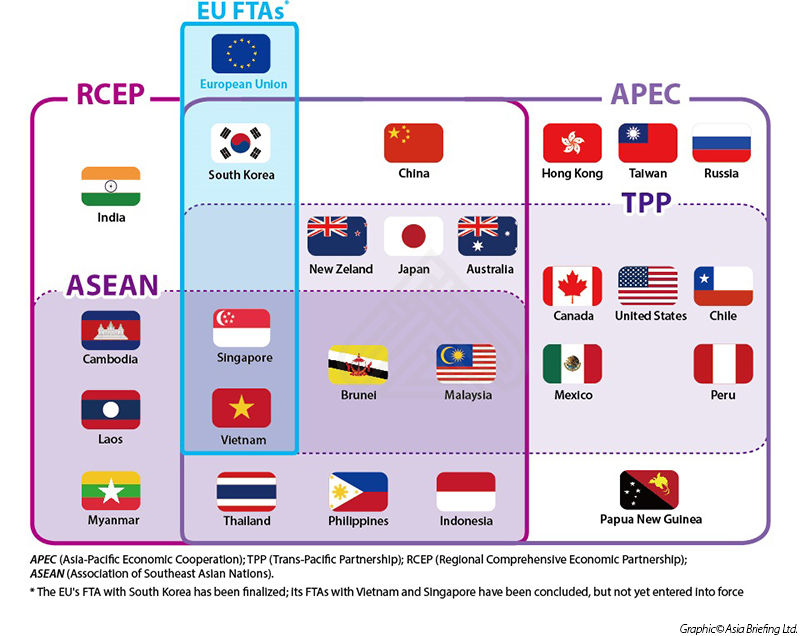Updated 28-Jun-2024
The EU-Vietnam Trade Treaty is still under discussion regarding the implementation details as of early 2017, due to the complexity and the level of reform needed to implement it on the Vietnamese side. Negotiation concluded on 02 December 2016, and the treaty will take force in 2018. The EVFTA is just one of a number of initiatives and opportunities for FDI in Vietnam in 2017 and beyond.
EVFTA in the wake of TPP, Reforms Needed
The failure of the TPP has moved more focus onto the EVFTA as a driver of foreign direct investment into Vietnam. Still, major policy and institutional reform is needed to make the EVFTA a success, which would see the EU almost completely available as free trade area for Vietnamese products, as well as making European products and capital available to Vietnam. Eurocham has highlighted significant benefits for both Europe and Vietnam: > Under the EVFTA, the EU is committed to removing 84 percent of tariffs on goods traded between the two economies, which Behrens says is a huge opportunity for Vietnamese goods to penetrate deeper into the European market, particularly export staples such as pepper, coffee, textiles, and footwear products. > > On the other hand, he noted, European merchandise, including wines, frozen pork, milk, and medicines will also have greater access to the Vietnamese market thanks to the corresponding tariff removal. > > Asked to compare the benefits the EVFTA and the TPP may bring to Vietnam, Behrens said the EU agreement is expected to contribute seven to eight percent to Vietnam’s overall growth on an annual basis. > > Citing results from recent research conducted in Hanoi, Behrens added that Vietnam is expected to rake in $2.2 billion worth of gains in welfare from the trade pact by 2020, and $4.1 billion by 2025. > > The EVFTA will also help increase wages for unskilled Vietnamese workers by 3 percent due to changing market dynamics and enable a 50 percent spike in Vietnam’s exports to the EU by 2020. Vietnam’s imports from the EU are also projected to rise 43 percent by 2020, he noted.
RCEP, ASEAN and Beyond
Beyond the EVFTA, there is the primary neighbor bloc of the other nine ASEAN members, as well as the Regional Comprehensive Economic Partnership (RCEP) includes Australia, China, India, Japan, New Zealand, and South Korea. Regarding RCEP, there should be some opportunities in this somewhat unweildy but extremely large market (spanning nearly half the worlds' population and 30% of GDP).
Vietnam has an opportunity to act as a corridor from ASEAN (and RCEP) to the EU based on the EVFTA. Similar trade agreements have been concluded between the EU and South Korea and also the EU and Singapore.
